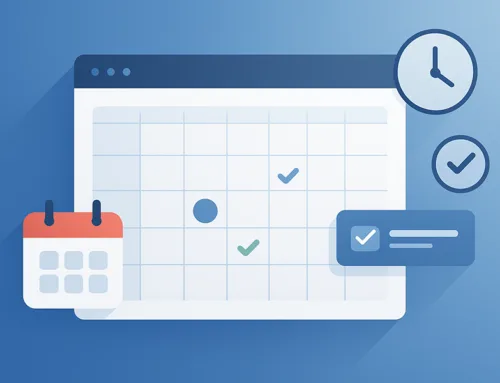Achieving a healthy work-life balance has become a top priority for employees and organisations alike. In today’s fast-paced professional world, effective leave management plays a vital role in ensuring employees have the time they need to recharge, spend with their families, or pursue personal interests. For businesses, providing tools and systems such as a staff holiday calendar can help create a more supportive and efficient workplace.
Here, we explore how streamlined leave management fosters work-life balance and benefits both employees and organisations.
The Importance of Work-Life Balance
Work-life balance refers to the equilibrium between professional responsibilities and personal well-being. Employees who achieve this balance are generally more productive, motivated, and satisfied in their roles. Key benefits of promoting work-life balance include:
- Reduced Stress: Encouraging employees to take regular breaks helps alleviate stress and prevents burnout.
- Improved Productivity: Well-rested employees are more focused and effective in their work.
- Increased Retention: Organisations that prioritise work-life balance are more likely to retain top talent.
- Better Health Outcomes: Employees with balanced lives experience fewer health issues, leading to lower absenteeism.
The Challenges of Leave Management
While the benefits of work-life balance are clear, managing employee leave can be complex. Common challenges include:
- Tracking Leave Balances: Without a clear system, it’s easy to lose track of how much leave employees have taken.
- Overlapping Requests: Approving multiple leave requests for the same period can leave teams understaffed.
- Manual Processes: Relying on paper forms or spreadsheets is time-consuming and prone to errors.
- Employee Dissatisfaction: Inefficient or unclear leave policies can lead to frustration and disengagement.
How a Staff Holiday Calendar Supports Work-Life Balance
Implementing a staff holiday calendar is one of the most effective ways to address these challenges and support work-life balance. Here’s how:
- Streamlined Leave Requests: Employees can submit leave requests digitally, making the process quick and transparent. Managers can review and approve requests in real-time, reducing delays and confusion.
- Improved Visibility: A centralised holiday calendar provides a clear view of who is on leave and when. This helps managers plan workloads and ensure adequate staffing levels.
- Fair Allocation of Leave: With an organised system, HR teams can ensure that leave requests are handled equitably, fostering a sense of fairness among employees.
- Encouragement to Take Time Off: Visibility into available leave balances encourages employees to use their entitlements, ensuring they take regular breaks to recharge.
Benefits for Employees
- Greater Flexibility: Employees can plan their holidays with confidence, knowing their requests will be handled efficiently.
- Transparency: A digital system provides real-time updates on leave balances and approvals, eliminating uncertainty.
- Work-Life Balance: Encouraging employees to take time off helps them maintain a healthy balance between work and personal life.
Benefits for Organisations
- Enhanced Productivity: Balanced employees are more focused and motivated, leading to improved performance.
- Reduced Absenteeism: Regular breaks prevent burnout and health-related absences.
- Stronger Employer Brand: Demonstrating a commitment to work-life balance enhances your organisation’s reputation as an employer of choice.
Best Practices for Easy Leave Management
- Establish Clear Policies: Ensure your leave policies are well-documented and accessible. Include guidelines on how to submit requests, approval timelines, and carry-over rules.
- Leverage Technology: Invest in a staff holiday calendar to automate and streamline the leave management process.
- Encourage Open Communication: Create a culture where employees feel comfortable discussing their leave needs with managers.
- Monitor Usage Trends: Use data insights to identify patterns in leave usage and adjust policies to meet employee needs while maintaining operational efficiency.
- Promote Regular Breaks: Encourage employees to take their leave entitlements, even during less busy periods, to ensure they have time to rest and recharge.
The Role of Leadership in Promoting Balance
Leaders play a crucial role in fostering a culture of work-life balance. Here’s how they can set the tone:
- Lead by Example: Encourage managers to take regular breaks and set boundaries, demonstrating the importance of balance.
- Recognise Efforts: Acknowledge employees who contribute to maintaining a harmonious workplace while prioritising their well-being.
- Provide Resources: Equip teams with tools like a staff holiday calendar to make leave management seamless and stress-free.
Supporting Remote and Hybrid Work Environments
The rise of remote and hybrid work models has added complexity to leave management. A digital holiday calendar is especially valuable in these contexts, offering:
- Real-Time Updates: Keep track of leave schedules across different locations and time zones.
- Seamless Integration: Sync with team calendars to provide a unified view of availability.
- Flexibility: Accommodate diverse work arrangements while ensuring consistency in leave management.
Conclusion
Supporting work-life balance through effective leave management is a win-win for employees and organisations. By implementing tools like a staff holiday calendar and adopting best practices, businesses can create a more harmonious and productive workplace.
Prioritising employee well-being not only enhances morale and engagement but also drives long-term success, positioning your organisation as a leader in fostering a balanced and supportive work environment.





